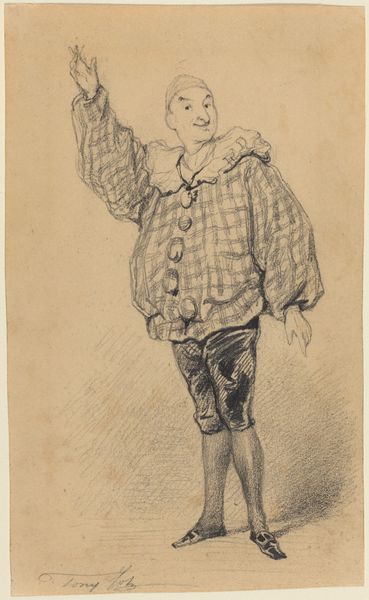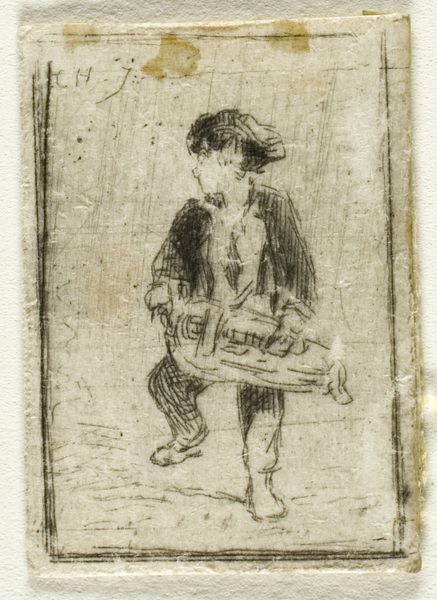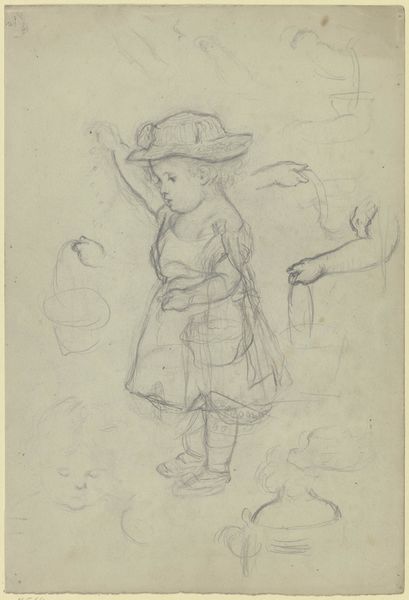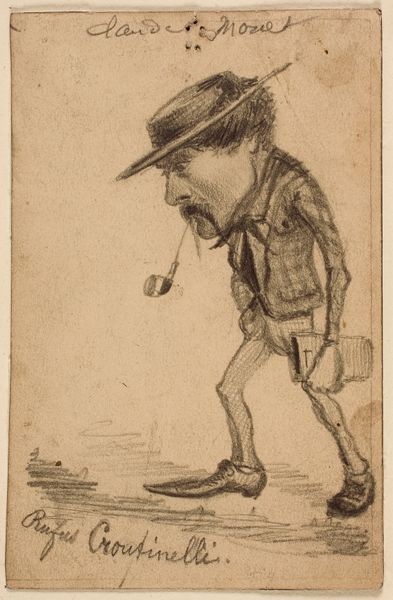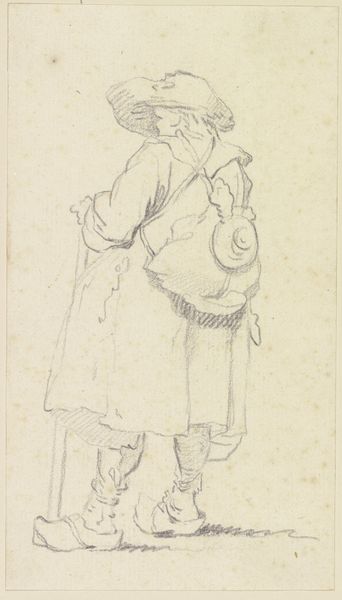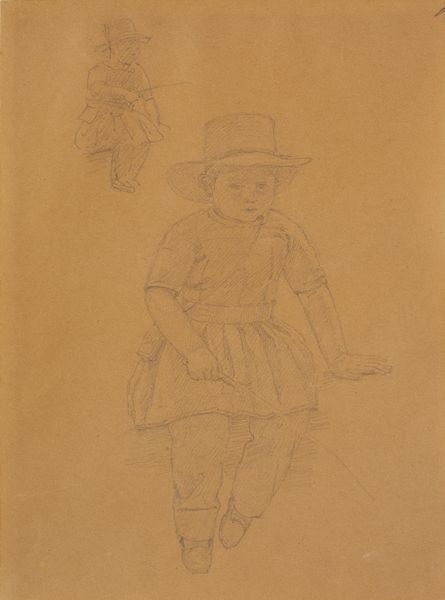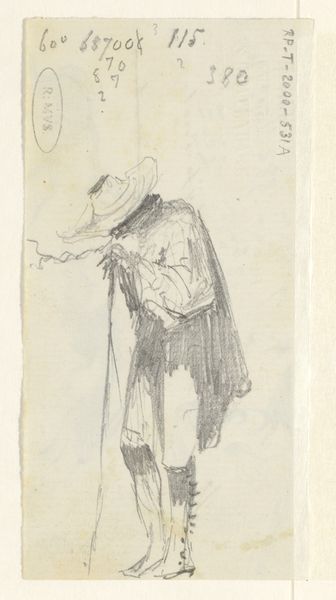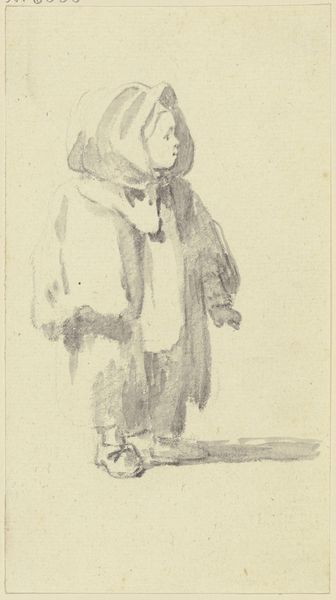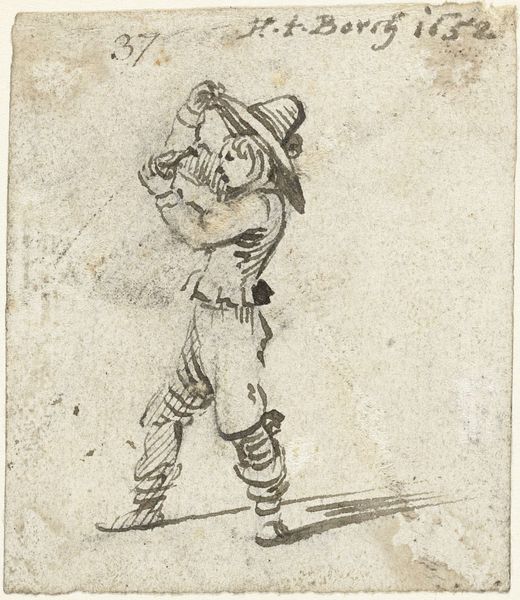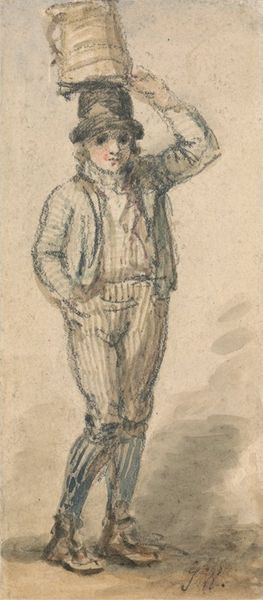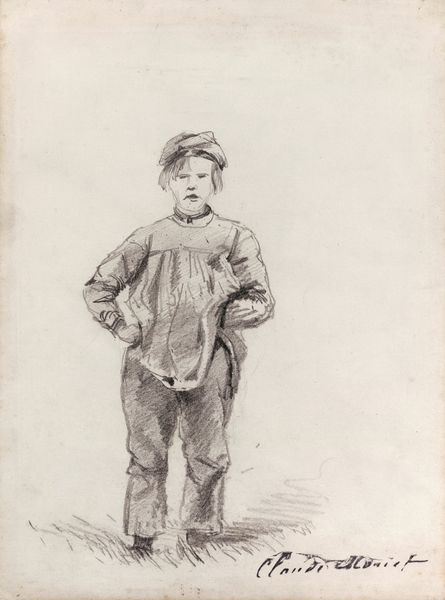
drawing, coloured-pencil, paper, pencil, pastel
#
portrait
#
drawing
#
coloured-pencil
#
caricature
#
paper
#
pencil
#
pastel
Copyright: Public Domain
Editor: Here we have a drawing called "Crying Boy" by Wilhelm Busch, crafted with pencil, coloured pencil, and pastel on paper. I find the figure striking—it feels almost like a caricature, and the sketchiness adds a certain raw emotion. How do you interpret this work, especially its emotional tone? Curator: This seemingly simple sketch opens up layers of cultural meaning. The crying boy motif, while personally felt, taps into a broader tradition of portraying vulnerability and the pathos of childhood. Caricature itself, as a style, amplifies traits, drawing attention to perceived flaws or weaknesses. The fact that he cries—do you see it as sadness, anger, or frustration? Editor: I see sadness, definitely a deep sadness, or maybe a suppressed rage. His face seems partly hidden under that fur hat, creating more mystery. Curator: The concealment is key. It may reference cultural archetypes where displays of intense emotion were either celebrated or repressed. Think of mourning rituals, or, conversely, stoicism as an ideal. Is he allowed to cry? How might contemporary audiences react differently compared to Busch's time? Editor: That makes me rethink it completely. I initially saw individual emotion, but you’re making me consider the social framework that shapes even private expressions like crying. Curator: Exactly. And look at the pear on the floor, discarded like tears on the ground. It seems even casual still-life details gain new weight and open a path for fresh introspection. Editor: This was far more profound than I initially thought. Thank you. Curator: My pleasure. It's these symbolic reverberations that keep us revisiting and re-interpreting the familiar.
Comments
No comments
Be the first to comment and join the conversation on the ultimate creative platform.
